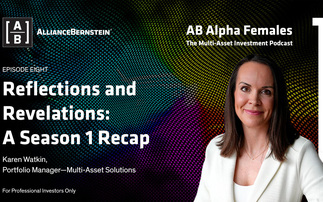
What is trade finance?
Trade finance can best be viewed as a sub-set of the loan market. It is relatively short-term loans used to finance the physical flow of goods, using those goods as the primary source of collateral within the loan.
How is our approach to trade finance different?
The Federated Hermes approach to trade finance is different than what we see in the market, based upon two main factors. One is the type of loans that we're doing. We typically co-invest with banks in the very like large – I'd say ‘bankable' – end of the trade finance market. So, within a corporate trade loan, our typical borrower is doing a US$500m to US$1.5bn loan. These are companies with an average US$1bn-plus EBITDA and leverage ratios of one to maybe three times. So, these are large loans to big companies that have very healthy balance sheets.
The second key differentiator is diversification. We diversify by borrower size, position size (typically under 1% of the portfolio), geography, sector and subsector, and types of loan structures. Unlike many others, we invest in both the supply-chain-finance-type of transactions, financial institution loans, corporate loans, a little bit of project finance and loans to sovereigns.
How does your strategy ensure a steady pipeline of top-tier deals?
We source deals from large global financial institutions, large banks, and development financial institutions (DFIs). Right now, we have about 40% of our transactions sourced from European banks, 30% from American banks, and the remainder from regional banks such as Japanese banks and African banks. What we are doing is we are partnering with banks in these trade finance transactions – for banks, this is an ‘originate-to-hold' not an ‘originate-to-distribute' model, it's a primary business of commercial banks. They're holding a significant portion of these loans on their balance sheets so that we are investing with them. We don't see ourselves as a bank disintermediation product. We're not taking the place of banks. We're working with banks.
How does the team navigate risks?
An interesting aspect of the trade finance market is that these are loans that facilitate the physical flow of goods. But what we're lending to is a specific trade flow or asset conversion cycle not to a company for general corporate purposes. So, both the art and science of analysing one of these transactions is to identify what are the risks inherent in this transaction and how can we mitigate those risks or hedge them to acceptable levels. We look at risk on three different factors: credit risk, structure risk and macro risk. There are ways to mitigate risk – each one of those types of risk. However, because each transaction is a bespoke financing, there's no typical way to do it. But all of those risks can be identified and mitigated by various techniques.
What are the wider benefits of the strategy?
Our trade finance supports the flow of essential goods globally, even during economic downturns. During the financial crisis and the Covid-19 pandemic, our securitised, collateralised trade finance transactions helped maintain the supply of essential goods like energy and food.
For professional investors only. Capital at risk.
The value of investments and income from them may go down as well as up, and you may not get back the original amount invested. The views and opinions contained herein are those of the author and may not necessarily represent views expressed or reflected in other communications. This does not constitute a solicitation or offer to any person to buy or sell any related securities or financial instruments.
Issued and approved by Hermes Investment Management Limited ("HIML") , as distributor, which is authorised and regulated by the Financial Conduct Authority. Registered address: Sixth Floor, 150 Cheapside, London EC2V 6ET.






